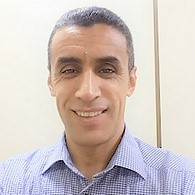Nanowires and Quantum Dots for IoT Applications
A special issue of Crystals (ISSN 2073-4352).
Deadline for manuscript submissions: closed (15 December 2019) | Viewed by 13876
Special Issue Editors
Interests: nanowires and quantum dots; nanoelectronic devices; 3D integration; nanomaterials; thin films growth and nanotechnology; optoelectronics; terahertz spectroscopy; sensors; micro- and nanofabrication; tunnel FET
Interests: crystal growth; quantum wells/wires/dots; numerical modeling; optical and structural characterization; optoelectronic and photovoltaic devices
Special Issue Information
Dear Colleagues,
Nanowires and quantum dots are emerging as building blocks for the bottom–up assembly of nano-devices and functional systems, holding promise for a variety of application fields including chemical and biological sensors, field effect transistors, light-emitting diodes, photovoltaic cells, and photodetectors. The continuous progress in the improvement of nanowires and quantum dots properties as well as the development of novel nanostructures has paved the way to significant achievements in electronic and optoelectronic device performance.
This volume intends to cover the main fundamental and technological achievements related to the preparation methods and techniques, as well as the optical, electrical, and structural properties of materials and devices based on nanowires and quantum dots. Numerical modelling of the fundamental properties of the nanowires and quantum dots as well as the modelling and simulation of nanoelectronic and optoelectronic devices based on these nanostructures are particularly welcome.
This Special Issue of Crystals focuses on these innovative topics by inviting original contributions as well as topical reviews dealing with the fabrication, characterization, and modelling of materials and devices based on crystalline nanowires and quantum dots for IoT applications.
Dr. Bassem Salem
Dr. Bouraoui Ilahi
Guest Editors
Manuscript Submission Information
Manuscripts should be submitted online at www.mdpi.com by registering and logging in to this website. Once you are registered, click here to go to the submission form. Manuscripts can be submitted until the deadline. All submissions that pass pre-check are peer-reviewed. Accepted papers will be published continuously in the journal (as soon as accepted) and will be listed together on the special issue website. Research articles, review articles as well as short communications are invited. For planned papers, a title and short abstract (about 100 words) can be sent to the Editorial Office for announcement on this website.
Submitted manuscripts should not have been published previously, nor be under consideration for publication elsewhere (except conference proceedings papers). All manuscripts are thoroughly refereed through a single-blind peer-review process. A guide for authors and other relevant information for submission of manuscripts is available on the Instructions for Authors page. Crystals is an international peer-reviewed open access monthly journal published by MDPI.
Please visit the Instructions for Authors page before submitting a manuscript. The Article Processing Charge (APC) for publication in this open access journal is 2100 CHF (Swiss Francs). Submitted papers should be well formatted and use good English. Authors may use MDPI's English editing service prior to publication or during author revisions.
Keywords
- nanowires, nanorods, and quantum dots growth
- fundamental properties of novel nanowires and quantum dots structures (III-V, Ge(Si)Sn, III-V on Si substrate, etc.)
- nanowires and quantum dots based optoelectronic devices and active layers (LED, photodetector, solar cells, etc.)
- nanowire transistor and nanowire sensors
- 3D integration
- modeling nanowire/quantum dots electronic and optical properties
- physico-chemical characterizations
- strain engineered nanostructures
- luminescence properties of nanowires and quantum dots
- nanowire/quantum dots made from CMOS-compatible direct band gap materials (GeSn, GePb, GeC, etc.)
Benefits of Publishing in a Special Issue
- Ease of navigation: Grouping papers by topic helps scholars navigate broad scope journals more efficiently.
- Greater discoverability: Special Issues support the reach and impact of scientific research. Articles in Special Issues are more discoverable and cited more frequently.
- Expansion of research network: Special Issues facilitate connections among authors, fostering scientific collaborations.
- External promotion: Articles in Special Issues are often promoted through the journal's social media, increasing their visibility.
- e-Book format: Special Issues with more than 10 articles can be published as dedicated e-books, ensuring wide and rapid dissemination.
Further information on MDPI's Special Issue polices can be found here.






